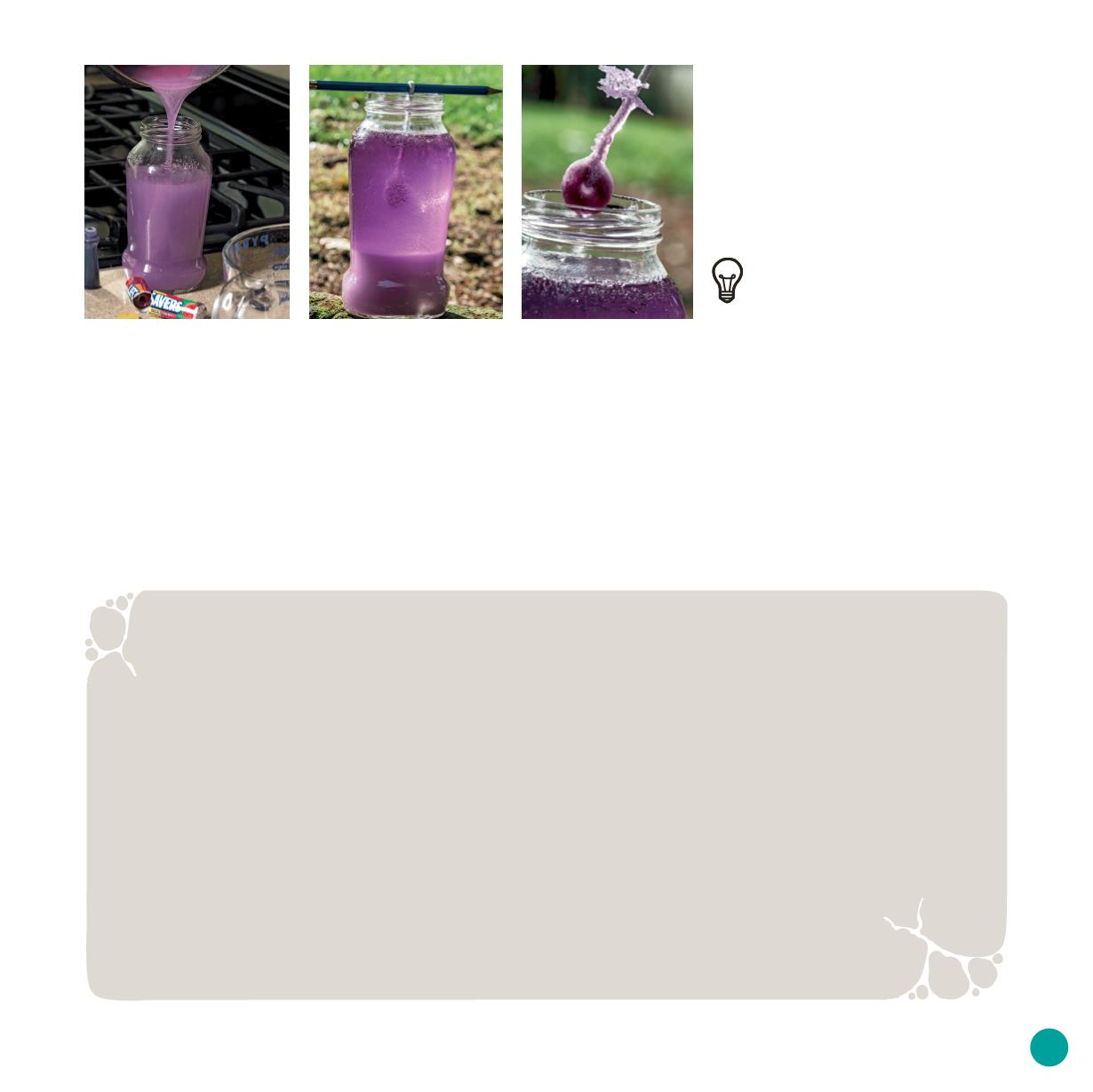
9
Growing sugar crystals is a great way to learn how
saturated solutions are unstable at room tempera-
ture. The solution cannot handle any more sugar
when the temperature falls, and crystals start to
form. Over time, some water will evaporate, while
solid sugar begins to crystallize. That’s why it’s im-
portant to avoid using a lid.
Sugar is a crystal with the formula C
12
H
22
O
11
. That’s
twelve carbon atoms, twenty-two hydrogen atoms,
and eleven oxygen atoms. They form as cubes, and
their crystal “habit” is known as
cubic
. If you mea-
sure the angles with a protractor, each elbow should
be 90 degrees.
If you keep adding sugar solution to the jar, you can
grow enormous crystals. This is key to understand-
ing how crystals form in the Earth. A solution that
flows through cracks in the rocks will refresh the
small crystals and they will keep growing. If you find
small crystals in a rock, they probably didn’t get a
lot of time to grow. But large crystals usually tell
mineralogists that growth conditions were perfect
for a long time.
THE SCIENCE BEHIND THE FUN
STEP 8:
Place the pencil across the
mouth of the jar so the candy floats
in the mixture.
STEP 9:
Place a paper towel, napkin, or
washcloth over the jar and set it aside in
a corner of the kitchen. Do not disturb.
Creative Enrichment
1. What happens if you use fishing
line or very smooth string?
2. Use a magnifying glass or hand
lens to look at the hardened
crystals. What shape are they?
Would you call that a square or
a cube?
3. What would happen if there
were twice as much water—
would the sugar ever crystallize
on the string?
STEP 7:
Pour the cooled water mixture
into the jar. The solution needs to be
cooled so that it won’t dissolve your
seed crystal. Avoid pouring any of the
little sugar crystals from the bottom of
the pan.
STEP 10:
Check on the string after a
day; it should already host small, square
sugar crystals.
STEP 11:
Leave the string in the solution
for at least a week. You can add more
solution if you want to grow bigger
crystals.


